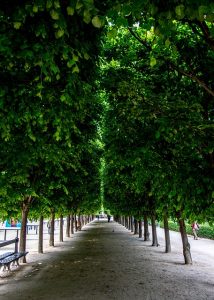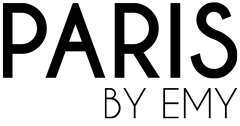Historical Louvre Rivoli Private Tour
Paris has always been a city of romance, art, and history, and nowhere are these elements more prevalent than in the historic Louvre Rivoli district. For visitors looking to immerse themselves in the heart of Parisian history, the Louvre Rivoli Historical Area Private Tour by PARIS BY EMY offers an unforgettable experience, taking you through centuries-old landmarks, iconic architecture, and hidden treasures with the personal touch only a private tour can offer.

Louvre Rivoli Private Tour Guide
- Paris Official Licensed Tour Guide – English Speaking
- From €360 – USD $375 up to 6 persons upon level of customization
- 3 hours walking private tour guide with stops and highlights
- Combination possible with Les Halles and Le Marais
- Optional private driver for a 4 hour up to 8 hour city tour
Actually, if you’re wondering what the top sights and experiences are on this private tour, we’ve narrowed it down to five standout stops that combine art, history, and pure Parisian allure.
Private Tour Guide in Paris
| Pricing | Duration | Number of people | Custom Features |
|---|---|---|---|
| From 240 Euros | 2 hours walking | Up to 6 persons | Hotel pick up |
| From 360 Euros | 3 hours walking | Up to 6 persons | Hotel pick up |
| From 850 Euros | 4 hours guide and driver | Up to 6 persons | Hotel pick up |
| From 950 Euros | 3 hrs walking and 2 hrs museum private tours | Up to 6 persons | Hotel pick up |
| From 1,450 Euros | 4 hrs driving and 2 hrs museum private tours | Up to 6 persons | Hotel pick up |
Custom Paris Private Tours Driver in Option
The Magnificent Louvre Museum
Indeed, no visit to the Louvre Rivoli area would be complete without exploring the Louvre Museum itself. As the world’s largest art museum, the Louvre is home to over 380,000 pieces of art, including masterpieces like the Mona Lisa and the Venus de Milo. The museum’s architecture is equally awe-inspiring, with its iconic glass pyramid entrance blending with the grandeur of 12th-century fortress walls. Your private guide will offer insights into these world-famous works and stories behind lesser-known but equally captivating pieces.

The Tuileries Garden stretches from the Louvre Palace (east) to the Place de la Concorde (west). Bordered to the north by the Rue de Rivoli, the Place des Pyramides and to the south by the Seine. The Arc du Carrousel, built in 1806 in the Carrousel Garden, marks the entrance to the Tuileries. The Tuileries Palace, which closed off the Louvre on its western side, was burned down during the Commune in 1871. Its ruins were razed to the ground in 1880.
Palais Royal and Its Garden
Adjacent to the Louvre is the Palais Royal, a historical gem with ties to French royalty. Built in 1629, this beautiful palace has housed royalty and artists alike. Today, its gardens offer a peaceful retreat from the city’s bustle. The courtyard is also home to Daniel Buren’s striped columns, which add a modern touch to the otherwise classical setting. The Palais Royal offers an intriguing contrast to the Louvre, with PARIS BY EMY’s private tour providing historical context on its evolution through the ages.
Ordered by the Cardinal de Richelieu in 1633, the Palace was built close to the Louvre. At the time, it was a royal residence, to enable this influential minister to stay nearby the king. A lover of the arts, the Cardinal notably built a first performance hall, inaugurated in May 1635. Cardinal Richelieu died in 1642. The Cardinal Palace, today known as the Palais Royal, remains the emblematic building of the link between Louis XIII and his principal minister Richelieu.

In 1629, Cardinal Richelieu had a first small garden built there. Four years later, in 1633, he created a second larger garden designed by architect Jacques Lemercier. In 1674, the plantations were redesigned by the gardener André Le Nôtre at the request of King Louis XIV. Then, in 1730, his nephew, Claude Desgots, replaced the hornbeams and bowling greens with a lawn. All around, he also planted ball elms, as well as two quincunxes of lime trees. Finally, he installed large trellises hiding the elements considered unsightly from neighboring homes!
L’Oratoire du Louvre Temple
The temple of the Oratoire du Louvre, located between rue Saint Honoré and rue de Rivoli, belongs to the United Protestant Church of France. This construction is in the form of a church, between 1621 and 1630, by the architects Clément Métezeau and Jacques Lemercier (1585-1654), on the site of the old ramparts of Philippe-Auguste. Father Pierre de Bérulle and the Congregation of the Oratory decided to build the church.
Under the reign of Louis XIII, it became the Royal Chapel of the Palais du Louvre. The nave of the church was built by Clément II Métezeau 1581-1652). It was only in 1811 that it was made available to Protestants by Napoleon I. In 1889 a statue of Admiral de Coligny (1519-1572) was installed at the apse of the church at 160 rue de Rivoli. He was a notable Protestant. His murder happened on August 24, 1572 nearby during the Saint-Barthélemy’s Day massacre.

Saint-Germain-l’Auxerrois Church
This stunning church, located just across from the Louvre, has an extensive history dating back to the Middle Ages. Saint-Germain-l’Auxerrois Church was once the royal parish for French kings. Its architecture reflects a fascinating blend of Gothic, Renaissance, and Baroque styles. Its intricate stained-glass windows, towering bell tower, and peaceful interior make it a must-see for history and architecture enthusiasts.
This is a Roman Catholic church in Paris First Arrondissement directly across from the Louvre Palace. Indeed, it took its named from Germanus of Auxerre, the Bishop of Auxerre (378–448). He became a papal envoy and met Saint Genevieve, the patron Saint of Paris, on his journeys. Moreover, she is reputed to have converted French King Clovis I to Christianity. She did succeed to convert them at the tomb of Saint Germain in Auxerre.
The exterior of the church, begun in the harmoniously blends elements of Romanesque architecture, Rayonnant Gothic, Flamboyant Gothic, and Renaissance architecture. However, the only existing Romanesque elements, dating from the 12th century, are found in the lower portion of the bell tower, where it is attached to the south transept.
The current church was built in the 13th century. It had major modifications in the 15th and 16th centuries. From 1608 until 1806, it was the parish church for inhabitants of the palace, and also many notable artists and architects, who worked on the palace, have their tombs in the church. Following the 2019 fire that severely damaged Notre Dame de Paris, the cathedral regular services have been held at Saint-Germain-l’Auxerrois. The current structure is largely from the 15th century.

Rue de Rivoli: A Stroll through History
One of the most famous streets in Paris, Rue de Rivoli runs parallel to the Seine and passes some of the most top landmarks to do in Paris. Lined with beautiful arcades, chic boutiques, and traditional cafés, Rue de Rivoli invites you to take a leisurely stroll through Parisian history. This street encapsulates the spirit of Paris, where history, art, and modern life coexist seamlessly. PARIS BY EMY’s guide will point out noteworthy sights and introduce you to hidden gems along the way.
The Rue de Rivoli runs through the heart of Paris and stretches for nearly 3 km, on the right bank. Its name comes from the name of the victory won by Bonaparte’s French army over the Austrians in 1797.
Louvre Rivoli Private Guided Tour in Paris
Have a look at all the Private Tour Guide in Paris available for more options.
Finally, discover the Louvre Rivoli area in addition to the Louvre museum in Paris within PARIS BY EMY bespoke full stay Paris Tour Package, for private walking or driving tour, including personalized services.
Emy,

